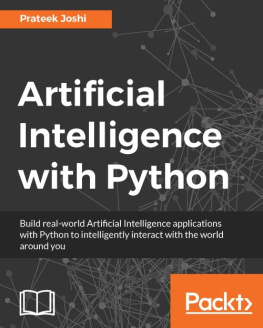1.1. Artificial Intelligence
Many authors, in various literature, have attempted to define Artificial Intelligence from different perspectives. In this book, a broad and general definition of Artificial Intelligence will be provided. Artificial Intelligence can be defined as a field of study that deals with the design of systems that act like a human, think like a human, act rationally and think rationally [].
This definition covers every definition of Artificial Intelligence that any literature can provide. It provides four different faces of Artificial Intelligence, which will
be explained in the next section. This means that Artificial Intelligence programs/systems are programs/systems that act like a human, think like a human, act rationally and think rationally.
1.1.1. Explanation of Artificial Intelligence
Each of the four faces of Artificial Intelligence, as provided in the definition, will be explained using an appropriate model. Each model will be used to explain each of the following faces of Artificial Intelligence that are: acting like a human, thinking like a human, acting rationally, and thinking rationally.
1.1.2. Turing Test Model Acting Like Human
The Turing test model explains what acting like human means. In 1958, Alan Turing proposed a test model that aimed at helping people to understand what acting like human means. The test that Alan Turing proposed involved interrogating a computer by a human via a teletype, and the computer passes the test without knowing whether the interrogator was a machine or human that answered the questions. However, in the total Turing test, there is the inclusion of video signal, which tests the perception abilities of the subject, and the exchange of physical object between the interrogator and the subject. Alan Turing, therefore, defined acting like a human as behaving intelligently. A machine/human that behaves intelligently is one that achieves human-level performance to cognitive questions. Therefore, making computers achieve human-level intelligence means that the computer will possess the following abilities or requirements [].
- The ability to communicate in natural language, like the English language, French language, etc.
- The ability to store information before or during the interrogation.
- The ability to use the stored information to answer questions and make a new conclusion. This is called automated reasoning in Artificial Intelligence.
- The ability to adapt to new circumstances due to new data, it discovers the pattern in the data and makes an appropriate decision.
Further more, passing the total Turing test requires additional abilities, which are:
- The ability to perceive with the sense organ of hearing, tasting, seeing, feeling, and smelling.
- The ability to move objects. This is called robotics in Artificial Intelligence.
From the above requirements or abilities of an intelligent system, we can use each requirement of an intelligent system to identify the various aspects or tasks that an Artificial Intelligence system can perform. The following are the tasks that an Artificial Intelligence system can perform.
- Natural Language Processing: This task allows an Artificial Intelligence system to communicate in natural language, like the English language.
- Knowledge Representation: This task allows an Artificial Intelligence system to use a particular method/formalism to store knowledge about a particular domain. This is called the knowledge base of an expert system.
- Automated Reasoning: This task allows an Artificial Intelligence system to query the stored knowledge with the aim of answering the users query. This is called an inference engine in an expert system.
- Machine Learning: This task allows an Artificial Intelligence system to solve a problem using a set of data called training data.
- Sensory Perception: This task allows the Artificial Intelligence system to solve a problem, using the sensory perceptions for vision, touch, hearing, tasting, smelling, etc.
- Robotics: This aspect of Artificial Intelligence allows the Artificial Intelligence system to solve the problem by moving itself or objects from one place to another.
1.1.3. Cognitive Model Thinking Like Human
If we are going to say that a given program thinks like a human, we must have some ways of determining how humans think. We need to get inside the actual workings of human minds. There are two ways to do this: through introspection trying to catch our own thoughts as they go by or through psychological experiments. Once we have a sufficiently precise theory of the mind, it becomes possible to express the theory as a computer program. Cognitive science brings together computer models from Artificial Intelligence and experimental techniques from psychology to try to construct precise and testable theories of the workings of the human mind [].
1.1.4. Rational Agent Model Acting Rationally
An agent is something that perceives and acts. It acts in order to achieve its goal. Therefore, acting rationally means acting like an agent. Artificial Intelligence is therefore considered as the study and construction of rational agents. One of the ways to act rationally is to make a correct inference, using the law of thought [].
1.1.5. Law of Thought Thinking Rationally
The law of thought helps to explain what thinking rationally means. It means right-thinking, i.e., given the correct premises (facts), it always produces the correct conclusion. The law of thought was originated by the Greet philosopher Aristotle. It marked the beginning of logic, which is very fundamental in Artificial Intelligence.
1.2. Foundational Discipline in Artificial Intelligence
Artificial Intelligence is a young field of study, but it uses many ideas, viewpoints, and techniques from various old disciplines. In this section, the various ideas, viewpoints, and techniques that Artificial Intelligence borrows from the various old disciplines will be considered. They form the foundation upon which Artificial Intelligence stands.

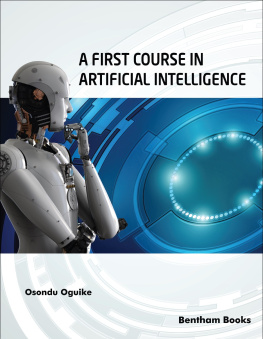
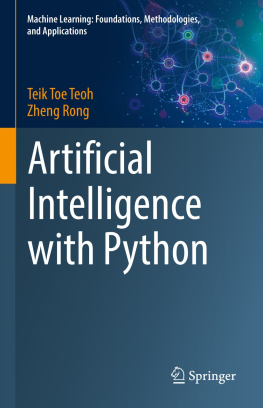

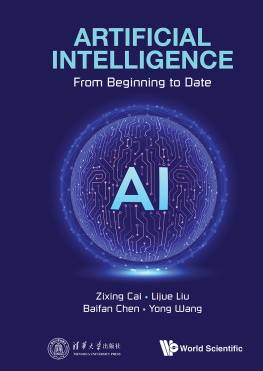
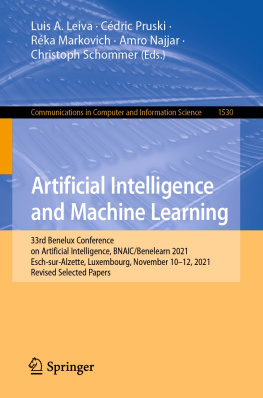
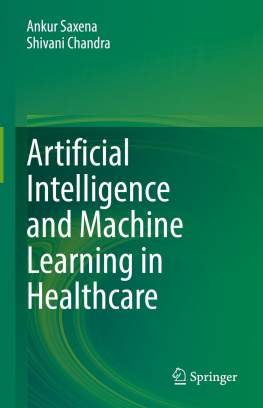
![Nisheeth Joshi [Nisheeth Joshi] - Hands-On Artificial Intelligence with Java for Beginners](/uploads/posts/book/119403/thumbs/nisheeth-joshi-nisheeth-joshi-hands-on.jpg)
